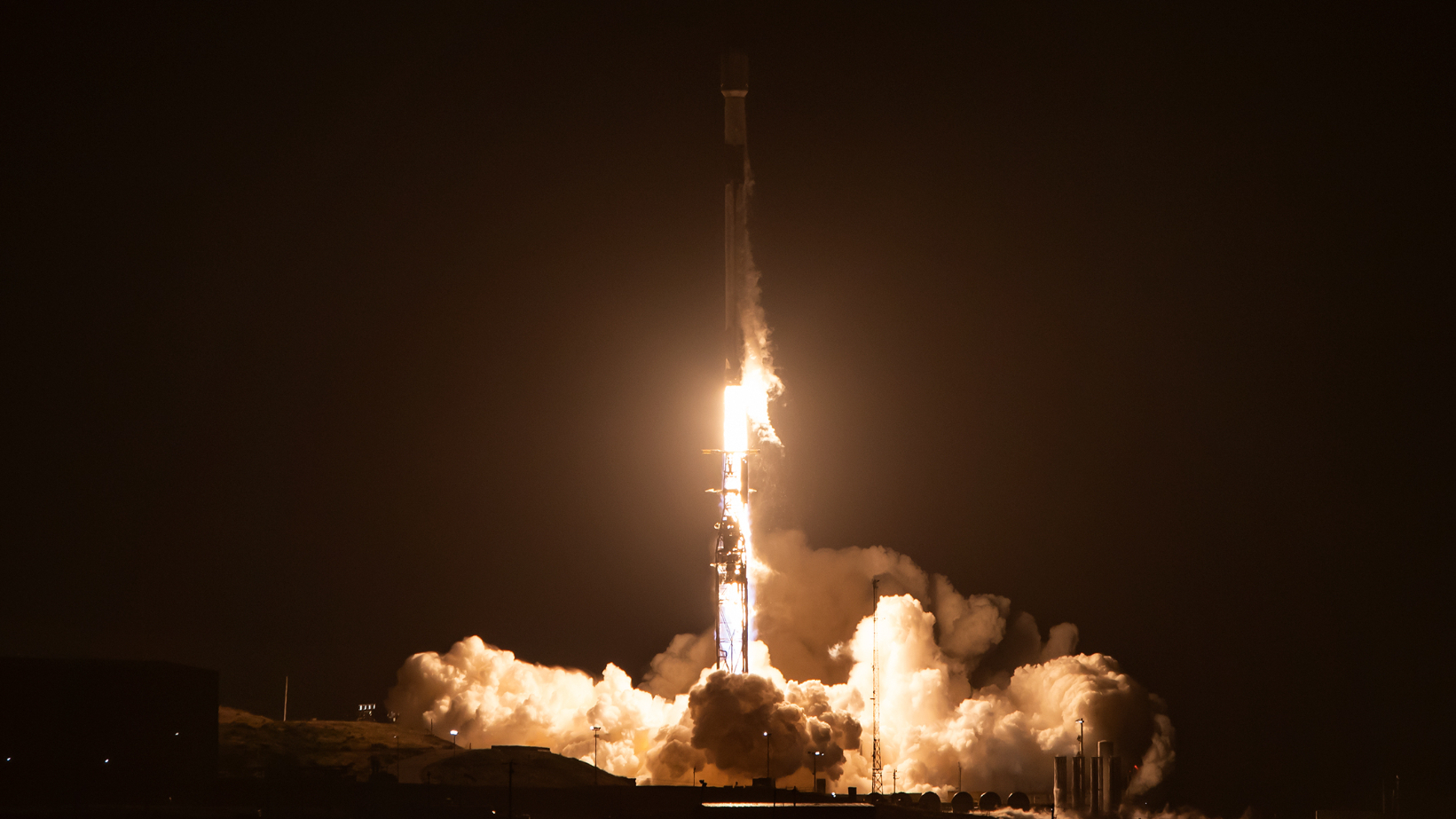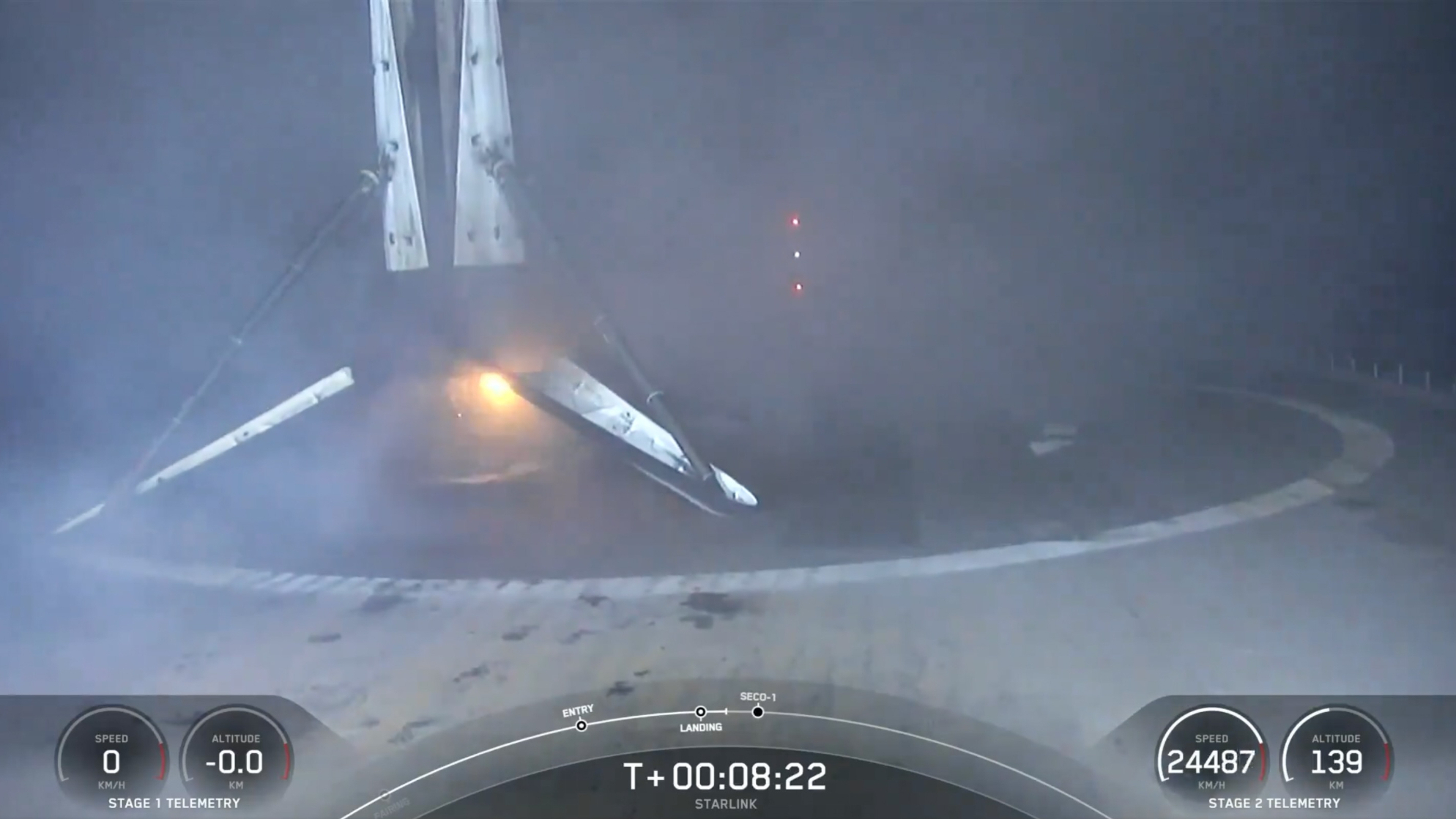
SpaceX launched 20 Starlink internet satellites from California early Friday morning (May 10), including 13 with direct-to-cell capability.
A Falcon 9 rocket topped with the Starlink craft lifted off from Vandenberg Space Force Base on Friday at 12:30 a.m. EDT (0430 GMT; 9:30 p.m. on May 9 local California time). SpaceX had originally planned to launch the mission on Wednesday night (May 8) but stood down from that attempt.
The Falcon 9's first stage came back to Earth about 8 minutes after launch as planned, touching down on the SpaceX droneship Of Course I Still Love You, which was stationed in the Pacific Ocean.
Related: Starlink satellite train: How to see and track it in the night sky

It was the 4th launch and landing for this particular first stage, according to a SpaceX mission description.
The Falcon 9's upper stage, meanwhile, continued carrying the Starlink satellites to low Earth orbit (LEO), eventually deploying them there about 61.5 minutes after liftoff.
SpaceX just launched a Starlink mission on Wednesday, sending 23 of the satellites to LEO from NASA's Kennedy Space Center in Florida.

Back-to-back launches are far from a novelty for SpaceX these days. On March 30, for example, the company launched two missions — a Starlink batch and the Eutelsat 36D telecommunications satellite — less than four hours apart, both of them from Florida's Space Coast.
Editor's note: This story was updated at 12:30 a.m. ET on May 9 with news of the new target launch date of May 9, then again at 2 a.m. ET on May 10 with news of successful launch, rocket landing and satellite deployment.







